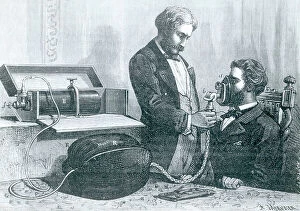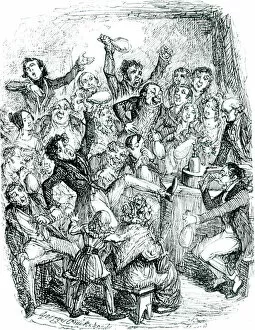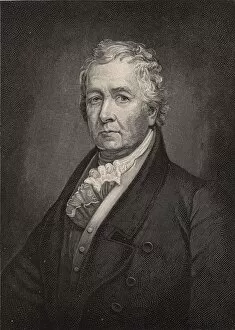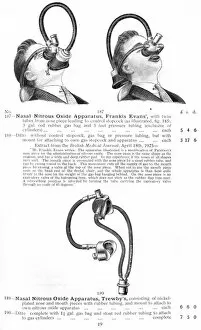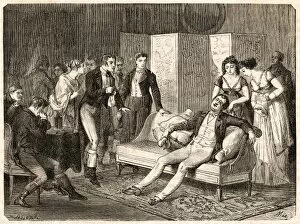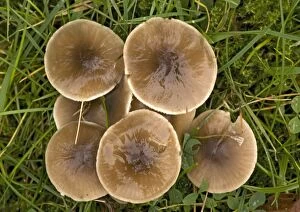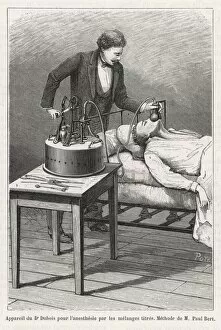Nitrous Collection
"Unleashing the Power of Nitrous: From Laughter to Safety" Step into a time capsule and witness the captivating effects oxide, also known as laughing gas
All Professionally Made to Order for Quick Shipping
"Unleashing the Power of Nitrous: From Laughter to Safety" Step into a time capsule and witness the captivating effects oxide, also known as laughing gas. In this mesmerizing illustration by George Cruikshank for John Scoffern's "Chemistry No Mystery, " we catch a glimpse of an enraptured audience at a lecture, joyously succumbing to the intoxicating allure of this remarkable substance. Humphry Davy, the brilliant British chemist and inventor of the safety lamp for miners, recognized nitrous oxide's potential beyond mere entertainment. His groundbreaking experiments paved the way for its use in various fields, including medicine and anesthesia. Picture Davy himself donning his invention while fearlessly exploring new frontiers. Across the Atlantic, Samuel Latham Mitchill, an esteemed American scientist, physician, and politician, surely marveled at Davy's discoveries. As air quality became an increasing concern during their era, monitoring stations like C018/0039 and C018/0044 diligently tracked nitrous oxide levels alongside other pollutants. Venturing further into modern times brings us face-to-face with anaesthetic apparatuses that revolutionized medical procedures. These devices owe their existence to pioneers like Humphry Davy and Paul Bert who harnessed nitrous oxide's potency in pain management. But let us not forget nature's own contribution – a waxcap mushroom thriving in old grassland emits a distinctively strong nitrous smell. This aromatic species serves as a reminder that even within our environment lies evidence of nitrogen compounds' influence on our senses. Nitrous oxide continues to captivate minds across generations with its multifaceted impact on science and society alike. So next time you encounter laughter-induced euphoria or marvel at advancements in anesthesia technology – remember that it all began with this extraordinary compound called nitrous.

